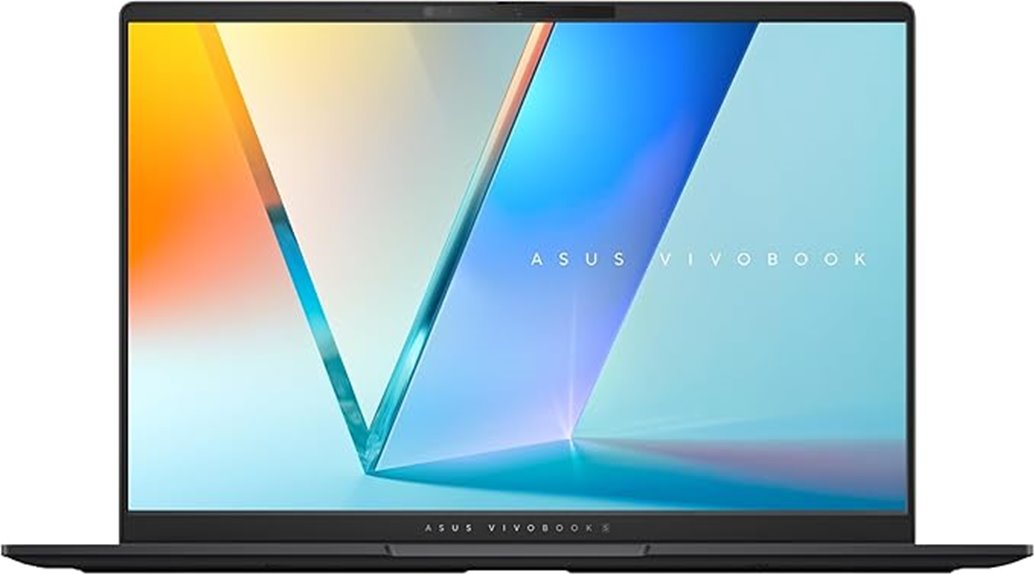Best Laptop for Full Stack Developer (Top 5 Picks for 2025)
In 2025, you’ll find powerful laptops for full stack developers like the Apple MacBook Pro with the M4 chip, the Acer Swift X 14, and the Apple MacBook Air 15-inch. Other great options include the ASUS Vivobook S 14 OLED and the Samsung Galaxy Book4 Pro. Look for features like at least 16GB RAM, SSD storage, and high-resolution displays to enhance your coding experience. Stick around to discover which laptop suits your needs best!
In the interest of full disclosure, we would like to inform you that some links on our website are affiliate links. By clicking on these links and completing a purchase from our partners, we may receive a nominal commission at no extra cost to you. Rest assured, our affiliate partnerships do not compromise the integrity of our editorial content or product evaluations. For further clarification, kindly refer to our comprehensive affiliate disclosure.
Table of Contents
What Are the Best Laptop for Full Stack Developer to Buy This Year?
Here are my top picks for the best laptop for full stack developer, you can consider this year.
Apple MacBook Pro Laptop with M4 Chip (14.2-inch Liquid Retina XDR Display)
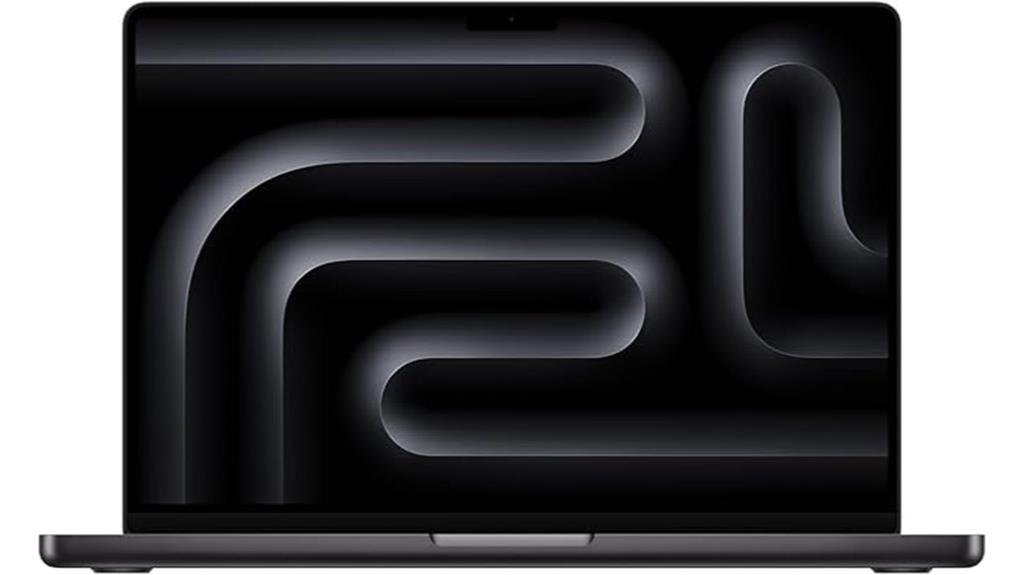
If you’re a full stack developer looking for a powerhouse laptop, the Apple 2024 MacBook Pro with the M4 chip is an excellent choice. With a 10-core CPU and GPU, it delivers exceptional speed for multitasking and running productivity apps. The 14.2-inch Liquid Retina XDR display boasts 1600 nits peak brightness and a stunning contrast ratio of 1,000,000:1, ensuring your visuals are always sharp. Plus, with 16GB of unified memory and 512GB SSD storage, you’ll have the performance and space you need. Its all-day battery life keeps you productive, whether you’re plugged in or on the go.
Best For: Full stack developers and professionals seeking a high-performance laptop for multitasking and running demanding applications.
Pros:
- Exceptional speed and performance with the M4 chip’s 10-core CPU and GPU.
- Stunning visuals with a 14.2-inch Liquid Retina XDR display featuring 1600 nits peak brightness.
- All-day battery life for uninterrupted productivity, whether at home or on the go.
Cons:
- Higher price point compared to other laptops in the market.
- Limited upgrade options for storage and memory after purchase.
- macOS may have a learning curve for users transitioning from Windows.
Acer Swift X 14 Laptop (SFX14-72G-77NJ)
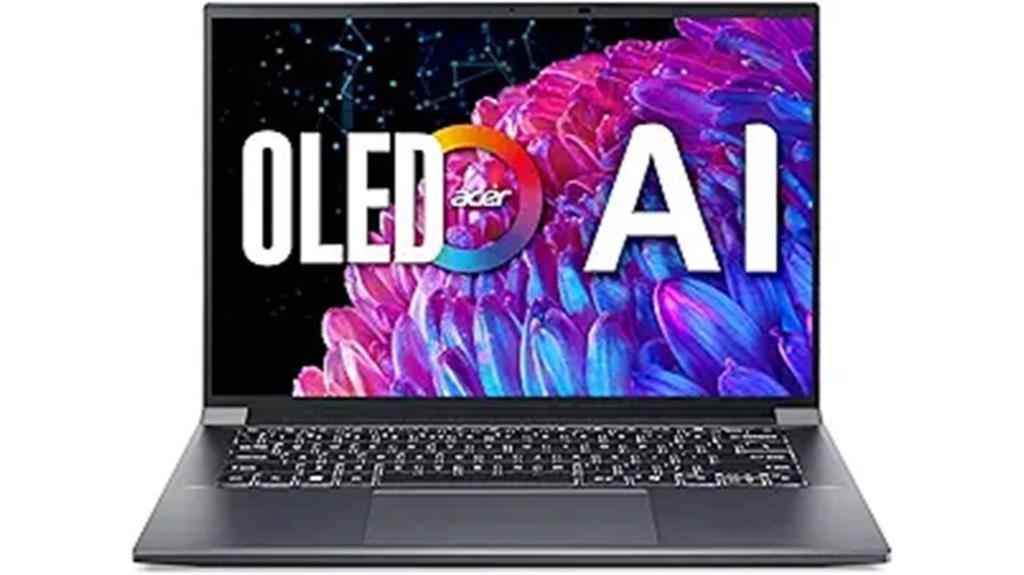
The Acer Swift X 14 Laptop (SFX14-72G-77NJ) stands out for full stack developers seeking a powerful and efficient machine. With an Intel Core Ultra 7 processor and NVIDIA GeForce RTX 4060 GPU, it handles graphically demanding software effortlessly. Its 14.5-inch OLED display offers stunning visuals with a 120Hz refresh rate, ensuring an immersive experience. You’ll appreciate the AI assistance with Copilot for multitasking and improved collaboration through its 1080p FHD webcam and noise-reduction features. Coupled with 16GB of memory and a 1TB SSD, this laptop provides the performance and connectivity you need for modern development tasks.
Best For: Full stack developers and creators looking for a powerful, efficient laptop with advanced AI capabilities and high-quality display.
Pros:
- High-performance hardware with Intel Core Ultra 7 processor and NVIDIA GeForce RTX 4060 GPU for demanding tasks.
- Stunning 14.5-inch OLED display with 2880 x 1800 resolution and 120Hz refresh rate for immersive visuals.
- Enhanced collaboration tools including a 1080p FHD webcam and AI noise reduction for clearer video calls.
Cons:
- Limited upgrade options due to soldered memory, which may restrict future enhancements.
- Potentially higher price point compared to entry-level laptops with less powerful specifications.
- Battery life may be affected by the high-performance components and OLED display usage.
Apple 2025 MacBook Air 15-inch Laptop with M4 Chip
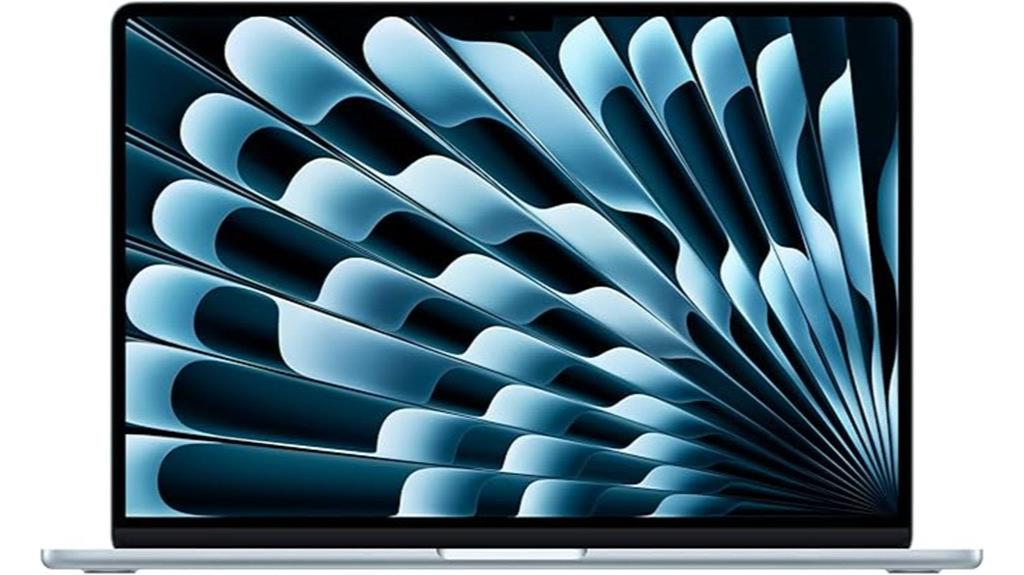
For full stack developers seeking a powerful yet portable machine, the Apple 2025 MacBook Air 15-inch Laptop with the M4 chip stands out with its impressive performance and battery life. You’ll enjoy enhanced speed for multitasking, video editing, and gaming, with up to 18 hours of battery life. The stunning 15.3-inch Liquid Retina display showcases 1 billion colors, ensuring sharp visuals. With a 12MP Center Stage camera and immersive Spatial Audio, your video calls will be top-notch. Plus, connectivity options like Thunderbolt 4 ports and Wi-Fi 6E make it easy to stay productive. This laptop truly excels in performance and usability.
Best For: Full stack developers and creative professionals seeking a powerful, portable laptop for multitasking and high-quality multimedia work.
Pros:
- Enhanced performance with the M4 chip for seamless multitasking, video editing, and gaming.
- Stunning 15.3-inch Liquid Retina display that supports 1 billion colors for sharp and vibrant visuals.
- Long battery life of up to 18 hours, allowing for extended use without frequent charging.
Cons:
- Limited upgrade options as components are typically not user-serviceable.
- May be more expensive compared to other laptops with similar specifications.
- Availability of only two Thunderbolt 4 ports may be limiting for users with multiple peripherals.
ASUS Vivobook S 14 OLED Slim Laptop (M5406WA-DS76)
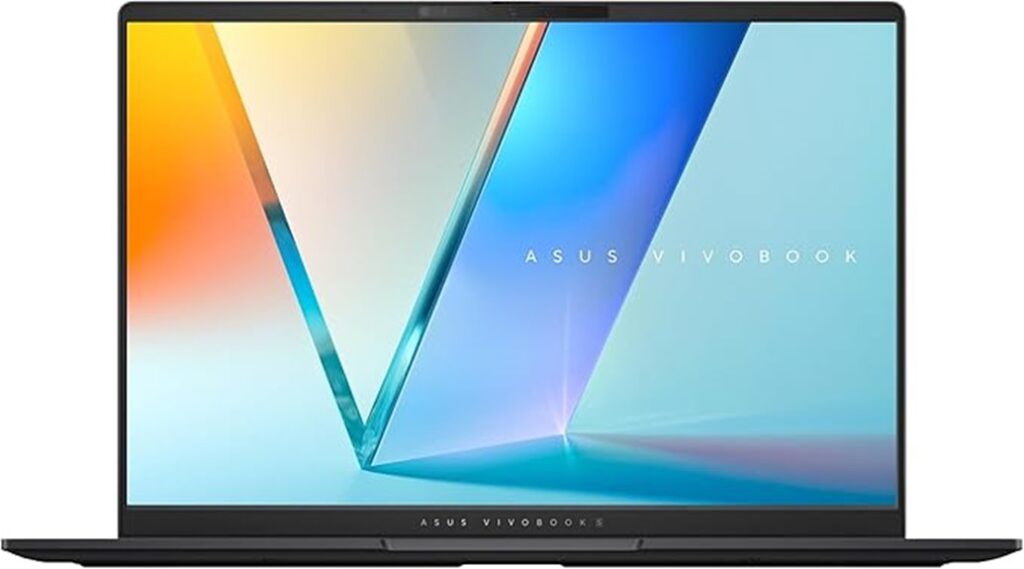
Engineered for full stack developers who demand power and portability, the ASUS Vivobook S 14 OLED Slim Laptop (M5406WA-DS76) stands out with its impressive AMD Ryzen 9 365 processor. With 10 cores and a 45+ TOPS NPU, it tackles heavy workloads effortlessly. You’ll appreciate the 24GB LPDDR5X RAM and 512GB SSD for smooth multitasking and quick data access. The stunning 14” 3K OLED display, boasting a 120Hz refresh rate and 600nits brightness, enhances your visual experience. At just 0.63” thick and 2.87 lbs, it’s easy to carry. Plus, customizable RGB backlighting adds a personal touch to your workspace.
Best For: Full stack developers and power users who require high performance and portability in a laptop.
Pros:
- Powerful Performance: Equipped with an AMD Ryzen 9 365 processor and 24GB LPDDR5X RAM for seamless multitasking and handling demanding applications.
- Stunning Display: The 14” 3K OLED screen with a 120Hz refresh rate and high brightness offers exceptional visual clarity and color accuracy.
- Lightweight and Portable: At just 0.63” thick and 2.87 lbs, it’s easy to take on the go without sacrificing performance.
Cons:
- Limited Storage: The 512GB SSD may be insufficient for users with extensive storage needs, requiring external storage solutions.
- Price Point: As a high-performance device, it may be priced higher than other laptops with less powerful specifications.
- Battery Life: High-performance components and a bright display may lead to shorter battery life under heavy usage compared to more power-efficient models.
Samsung Galaxy Book4 Pro Laptop (NP944XGK-KG4US)
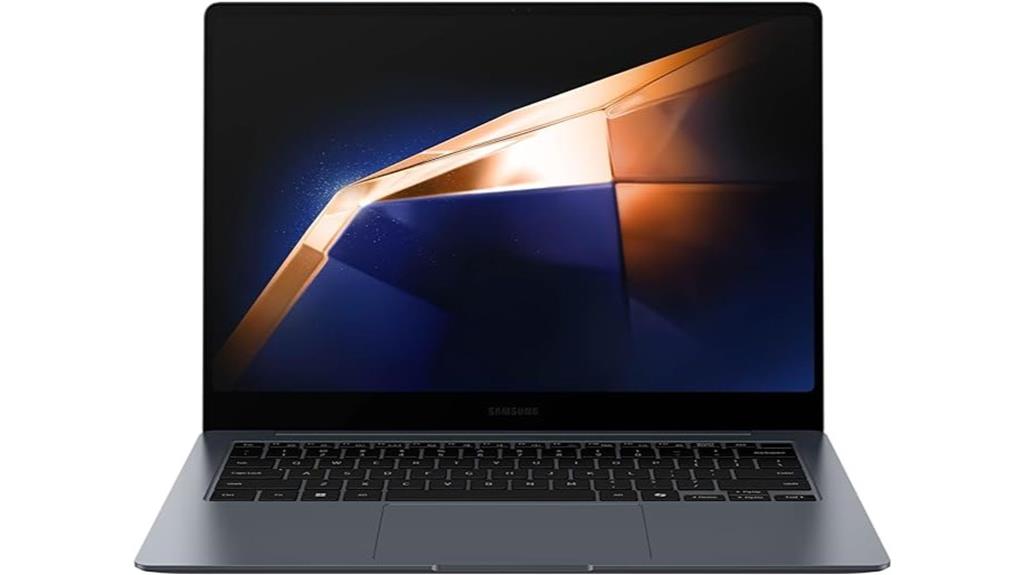
Samsung Galaxy Book4 Pro Laptop (NP944XGK-KG4US) stands out with its powerful Intel Core Ultra 7 processor and generous 32GB of RAM, making it an excellent choice for full stack developers who need robust performance for multitasking and resource-intensive applications. With a stunning 14-inch 3K AMOLED touchscreen, you’ll enjoy vibrant visuals for coding and presentations. Weighing just 2.71 lbs, it’s portable enough for professionals on the go. Plus, the fast-charging battery offers up to 8 hours of life, keeping you productive throughout the day. Integrated security features like Samsung Knox help protect your valuable data seamlessly.
Best For: Professionals and full stack developers seeking a lightweight laptop with powerful performance and vibrant display for multitasking and presentations.
Pros:
- Powerful Intel Core Ultra 7 processor with 32GB of RAM for efficient multitasking.
- Stunning 14-inch 3K AMOLED touchscreen for vibrant visuals and improved clarity.
- Lightweight and portable design, ideal for on-the-go professionals.
Cons:
- High retail price of $1749 compared to competitors with better specs.
- Limited RAM upgrade options in the US, Canada, and UK (max 16GB).
- Perceived low quality of OEM SSD from Western Digital for the price.
ALSO READ: Best Laptops for Web Development, Best Laptops for Teletherapy, Best Laptops for Instructional Designers, Best Laptop for Outdoor Use, Best Laptop for Serato Dj, Best Laptops for Interior Designers, Best Laptop for Serato, Best Laptop for Forex Trading, Best Laptops for Telehealth, Best Laptop for Djs
Factors to Consider When Choosing the Best Laptop for Full Stack Developer
When choosing a laptop as a full stack developer, you need to focus on several key factors. Performance and speed are crucial for handling complex tasks, while display quality affects your coding experience. Don’t forget about portability, connectivity options, and battery life, as they all play a significant role in your workflow.
Performance and Speed
Choosing the right laptop for full stack development is crucial, especially when it comes to performance and speed. Look for a laptop with a high-core-count processor, like the latest Intel or AMD CPUs, to ensure smooth multitasking and efficient handling of complex applications. You’ll want at least 16GB of RAM to run multiple apps and development environments without lag. A solid-state drive (SSD) with a minimum of 512GB will provide faster data access and improved load times, which is vital for managing large codebases. If your work involves graphics-intensive tasks, consider a dedicated graphics card to enhance rendering. Lastly, prioritize a battery life of 8-10 hours for extended coding sessions without interruptions.
Display Quality
While selecting a laptop for full stack development, display quality plays a crucial role in your overall coding experience. A high-resolution display, like 2880 x 1800 or higher, ensures sharp visuals, making it easier to read code and review complex designs. If you’re into front-end development, opt for displays that support a wider color gamut, such as 100% DCI-P3, for accurate color representation. A refresh rate of at least 120Hz enhances the smoothness of animations, crucial for testing web applications. Additionally, look for TÜV Rheinland Eyesafe certification to reduce eye strain during long sessions. Finally, consider an aspect ratio of 16:10 or similar to maximize vertical space, allowing you to view more code without excessive scrolling.
Portability and Design
Portability and design are vital for full stack developers who often work on the go. You’ll want a laptop that weighs between 2.5 to 3.5 lbs and is less than 0.7 inches thick, making it easy to carry alongside your other essentials. A slim profile enhances convenience during frequent travel. Aim for a display size between 14 to 15 inches; this strikes a balance between portability and usability, giving you enough screen space without compromising weight. Battery life is crucial too; look for models that provide at least 8 hours on a single charge, so you can stay productive without hunting for an outlet. Lastly, choose a durable design, like an aluminum chassis, to withstand daily wear and tear.
Connectivity Options
When you’re on the move, having the right connectivity options can make all the difference in your workflow as a full stack developer. Look for laptops with multiple USB ports, including both USB Type-A and USB Type-C, to ensure compatibility with various peripherals. Thunderbolt 4 is a must-have for high-speed data transfer and connecting multiple external displays. An HDMI port is essential for quick connections to monitors or projectors, which is key for presentations. A microSD card reader can also be handy for expanding storage or transferring files easily. Finally, robust wireless options like Wi-Fi 6E and Bluetooth 5.3 will keep you connected to online tools and collaboration platforms without interruption.
Battery Life
As you navigate the demanding world of full stack development, battery life becomes a crucial factor in maintaining your productivity on the go. Many modern laptops offer between 8 to 18 hours of usage on a single charge, making it easier to work without constantly searching for an outlet. High-performance laptops often feature power-efficient processors, enhancing battery longevity without sacrificing speed. Fast charging capabilities can also reduce downtime, allowing you to recharge during brief breaks. However, keep in mind that display technology can impact battery life; options like OLED and Liquid Retina deliver stunning visuals but may consume more power. Ultimately, striking a balance between battery life and performance will ensure you have the best tools for your development needs.
Frequently Asked Questions
What Operating System Is Best for Full Stack Development?
For full stack development, you’ll find that Linux is often the best choice. It’s flexible, supports various programming languages, and provides powerful tools. Plus, it’s widely used in server environments, enhancing your deployment process.
How Much RAM Do I Need for Development Tasks?
For development tasks, you’ll want at least 16GB of RAM to ensure smooth multitasking and efficient performance. If you’re working on larger projects or using virtual machines, consider upgrading to 32GB for optimal results.
Are Touchscreens Beneficial for Coding and Development Work?
Touchscreens can enhance your coding experience by allowing quick navigation and intuitive gestures. However, they might not replace traditional input methods entirely. It’s about personal preference and finding what boosts your productivity the most.
Should I Prioritize Battery Life or Performance for Development Laptops?
When choosing a development laptop, you should prioritize performance for smooth coding and multitasking. However, if you often work on the go, don’t overlook battery life – a balance between both is ideal.
What Is the Ideal Weight for a Portable Development Laptop?
The ideal weight for a portable development laptop is around 3 to 4 pounds. It’s light enough for easy transport while still providing the performance needed for coding and multitasking effectively.
My Final Opinion
In 2025, choosing the right laptop as a full stack developer means balancing power and portability. Each of the models we’ve reviewed offers unique strengths tailored to your coding and development needs. Whether you prefer the sleek design of the MacBook Pro or the versatility of the Acer Swift X, you can’t go wrong. Prioritize your specific requirements, and you’ll find the perfect device to elevate your development experience. Happy coding!
